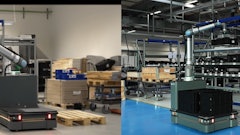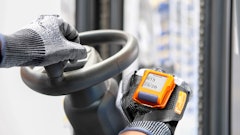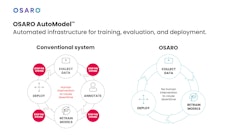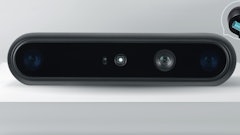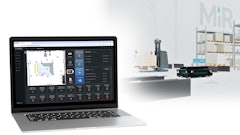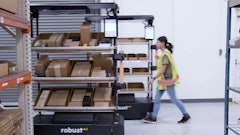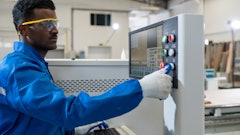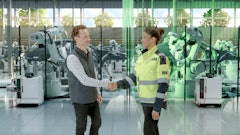
Zebra Technologies Corporation announces the expansion of Zebra Symmetry Fulfillment, a comprehensive solution that utilizes the company’s new Zebra Connect Fulfillment autonomous mobile robots (AMRs), wearable technologies, software and analytics designed to increase productivity and reduce costs in warehouse operations. This AI-powered solution combines the functions of a warehouse execution system (WES) with robot fleet management and powerful analytics.
“The Zebra Symmetry Fulfillment solution is designed to help warehouse operations maximize the benefits of AMR-assisted picking to reduce costs and boost productivity,” says Matthew Wicks, vice president and general manager, robotics automation, Zebra Technologies. “We are excited to bring intelligent automation to our warehouse customers to help ensure every movement is purposeful, every task is completed with precision, and throughput reaches its peak as this solution helps them optimize their labor and robotics resources.”
Key Takeaways:
- Using the new Zebra Symmetry Connect Fulfillment AMR, the solution enables frontline workers to load and unload orders to and from carts without requiring the AMR to remain permanently attached to each cart. This increases utilization and reduces the number of AMRs required in the fulfillment system. Fueled by Team Intelligence, this solution enables workers – also referred to as pickers – to pick more items in less time by coordinating each picker with a team of robots in a precise, directed workflow. This innovative approach improves throughput and empowers operational decision-making in fulfillment workflows.
- Team Intelligence improves throughput by routing robots ahead of pickers, so the right AMR is always where it needs to be when a picker arrives. Using detachable carts with increased cubic capacity allows pickers to handle a wider range of product sizes and up to 300% more volume; it also boosts pick density and eliminates AMRs wait times. In addition, the ability to decouple AMRs from carts at key points in the operation such as induction and packout allows AMRs to immediately return to supporting the picking operation without waiting for orders to be unloaded or inducted. All these efficiency improvements result in reducing the total number of robots required by up to 30%.

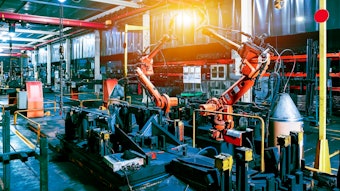

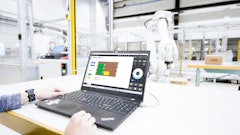

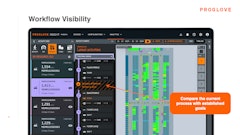

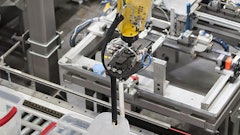


![Top Tech Logo Vertical [color]](https://img.sdcexec.com/files/base/acbm/scn/image/2024/11/top_tech_logo_Vertical__color_.672d2a7c2733d.png?auto=format%2Ccompress&bg=fff&fill-color=fff&fit=fill&h=135&pad=5&q=70&w=240)
![2024 Top Software Color[vertical]](https://img.sdcexec.com/files/base/acbm/scn/image/2024/10/2024_Top_Software___color_vertical_.6705637b3b03c.png?auto=format%2Ccompress&bg=fff&fill-color=fff&fit=fill&h=135&pad=5&q=70&w=240)
